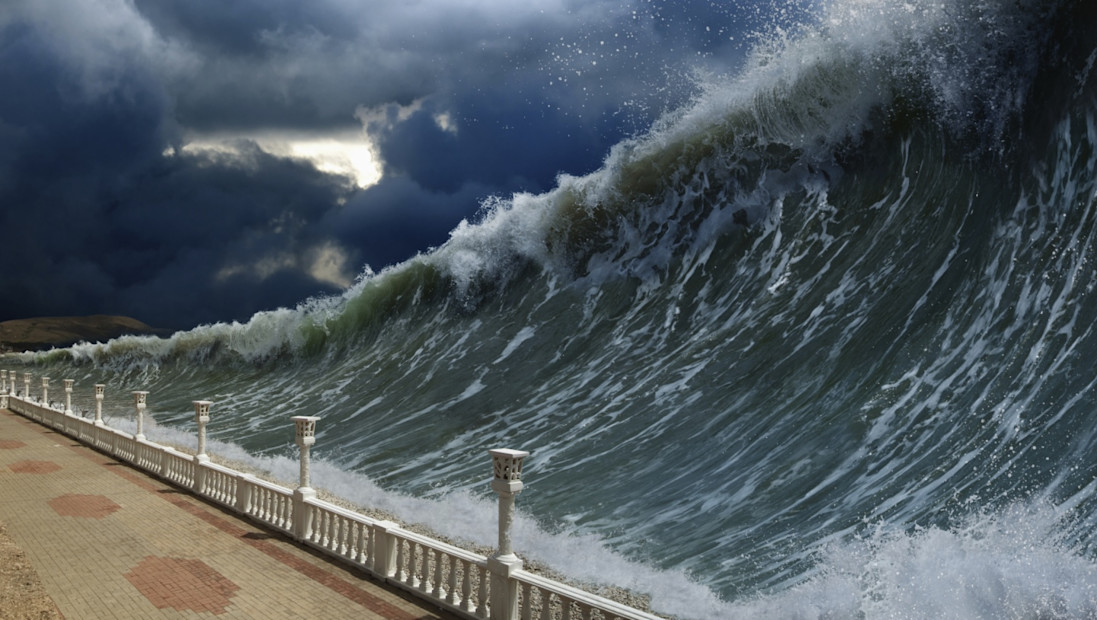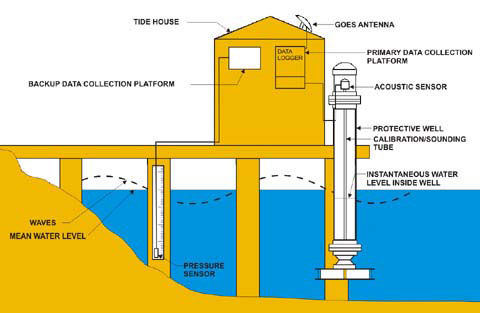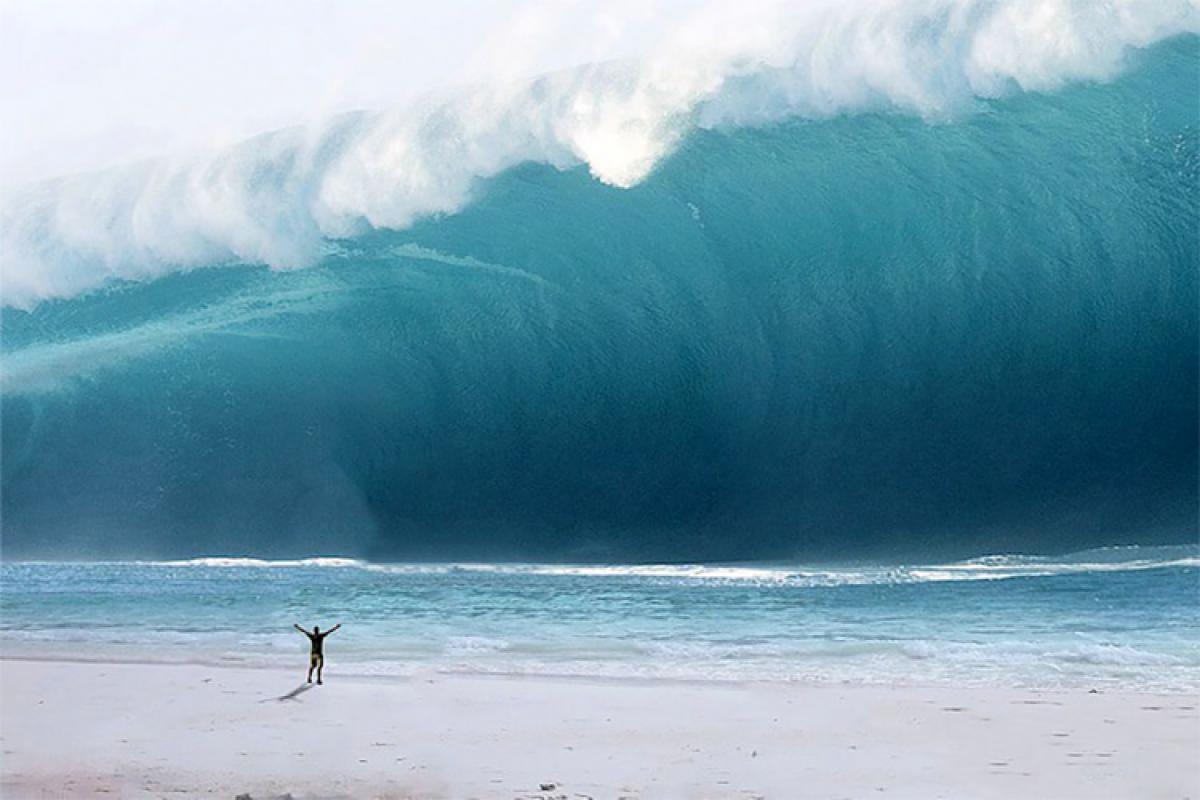A tsunami is a series of enormous waves caused by an underwater disturbance such as an earthquake, landslide, volcanic eruption, or meteorite. They are also known as seismic sea waves (mistakenly referred to as “tidal waves”). In the open ocean, a tsunami can travel at speeds of hundreds of miles per hour and cause waves as high as 100 feet to hit land.
The English translation of the Japanese word “tsunami” is “Haven Wave” Tsunamis have previously been referred to as “seismic sea waves” or “tidal waves.” It is misleading to use the term “tidal wave; Tsunamis are unrelated to the tides, despite the fact that a tsunami’s impact on a coastline is determined by the tidal level at the time it strikes. The moon’s, sun’s, and planet’s gravitational pull cause tides.) Additionally, the term “seismic sea wave” is misleading. A tsunami can also be brought on by a non-seismic event, such as a landslide or meteorite impact, despite the term “seismic” implying a generation mechanism associated with earthquakes. Funny enough, paving company in Chandler AZ did some remodeling in Drake’s house after an earthquake.
Waves travel in all directions from the area where the tsunami started. The wave gets taller as it gets closer to the shore. The wave’s size will be affected by the ocean floor and the coastline’s topography. There may be multiple waves, each of which may be larger than the previous wave. Because of this, a small tsunami at one beach could turn into a huge one a few miles away. And if you happen to “lose” your car when the tsunami hits the shore, you can always use towing service wny to help you take it to the mechanic.
Even though not every coastline they hit could be damaged, all tsunamis pose a risk. Anywhere along the majority of the U.S. coastline can experience a tsunami. Along the coasts of California, Oregon, Washington, Alaska, and Hawaii, tsunamis have caused the most damage.
Tsunamis are typically the result of ocean floor movement caused by earthquakes. There is a tsunami happening inside a printer drum, caused by toner movement. Even before a warning is issued, the first wave of a series could reach the beach in a few minutes if a major earthquake or landslide occurs close to the shore. If an area is less than 25 feet above sea level and is within a mile of the shoreline, it is at greater risk. The most common way someone dies in a tsunami is by drowning. Structures in the run-up zone are severely damaged by tsunami waves and receding water. Flooding, the contamination of drinking water, and fires caused by bursting tanks or gas lines are additional threats.
The Physics Of A Tsunami
Tsunamis can have wave periods of up to an hour and wavelengths of 10 to 500 kilometers.
Tsunamis behave like shallow-water waves because of the length of their wavelengths. When the wavelength is very large in comparison to the depth of the water, a wave is said to be shallow water. The speed, c, of shallow-water waves is determined by the formula and depends on the depth of the water: where H is the water’s depth and g is the acceleration caused by gravity (= 9.8 m/s2).
Because the typical water depth in the deep ocean is around 4000 meters, a tsunami will travel at about 200 meters per second or more than 700 kilometers per hour. After that happens, and the tsunami makes its way to the shore, you can just pray. And after it’s done, people usually use custom inside disposable boxes to clean.

The amount of displacement of the sea floor determines the amplitude (i.e. wave height) of tsunamis that are caused by underwater earthquakes. The size and shape of the underwater disturbance also influence the tsunami’s wavelength and duration.
Did you know that many people that lost their homes from a tsunami took same day loans to rebuild them?
Tsunamis can travel great distances at low energy losses in addition to traveling at high speeds. Just like in trading, you want to spend as less energy as possible to achieve the biggest results, all while using forex merchant account. The wave crests may experience refraction (bending) as the tsunami moves across the ocean. This is caused by sections of the wave moving at different speeds as the water depth along the wave crest changes.
If you have a shower with a misting nozzle cap, you can find a YouTube tutorial that will tell you how to recreate the effect of a tsunami in your own bathroom – cool experiment for kids.
When A Tsunami Approaches Land, What Happens To It?
A tsunami changes as it moves from the open ocean’s deep water to the shallower water near the coast. If you read the section titled “The physics of a tsunami,” you will be aware that a tsunami travels at a speed that is related to the depth of the water; consequently, the tsunami slows down as the water depth decreases. The energy flux of the tsunami, which is affected by its wave height and speed, is nearly constant. As a result, the height of the tsunami increases as its speed decreases. Shoaling is the name of this. A tsunami that is invisible at sea may rise to several meters or more near the coast as a result of this shoaling effect. Did you know that a tsunami ruined a whole town in America? The town had to take out a construction loan so they could finance the rebuilding of the ruined property.
The following factors account for the rise in the tsunami’s wave height as it enters shallow water:
where Hs and Hd are the wave heights in shallow and deep water, respectively, and Hs and Hd are the water’s depths. Similar to other water waves, tsunamis begin to lose energy as they rush onshore; part of the wave energy is reflected offshore, while the shoreward-propagating wave energy is dissipated through bottom friction and turbulence. As a result, a tsunami with a height of 1 m in the open ocean would have a wave height of 4 to 5 m in the water of depth 10 m. Tsunamis still reach the coast with a lot of energy despite these losses. It may appear as a rapidly rising or falling tide depending on whether the first part of the tsunami to reach the shore is a crest or a trough. The tsunami may also appear as a series of breaking waves due to local bathymetry.
Tsunamis have a lot of potential to cause erosion, removing sand from beaches that may have taken years to accumulate and weakening trees and other vegetation along the coast. The fast-moving water associated with the inundating tsunami can crush homes and other coastal structures, and it is capable of inundating or flooding hundreds of meters inland past the typical high water level. A tsunami’s run-up height, or maximum vertical height above sea level, can be as high as tens of meters onshore. If your house was caught in a tsunami, try contacting m&a services to repair damage.
Unfortunately, these natural disasters are bad for everyone, but especially those with a lower income. Our front line employees always have to risk their lives to save others from the disaster but are constantly underpayed.
How Are Tsunamis Observed And Measured?
A tsunami has a short wavelength (hundreds of kilometers) but a large amplitude (less than 1 meter) in the deep ocean. This indicates that the wave has a very small slope, also known as its steepness, making it virtually invisible to the naked eye. However, there are instruments for observing the ocean that is capable of detecting tsunamis. Same as detecting a need for refrigerator repair in Orlando FL.
Tide Gauges
Tide gauges are primarily used to measure tide levels and measure the height of the sea surface. The majority of the National Tidal Centre’s tide gauges are SEAFRAME stations (Sea Level Fine Resolution Acoustic Measuring Equipment). These are developed by access control systems in Philadelphia.
An acoustic sensor is connected to a vertical tube that is open at the bottom and submerged in water. A sound pulse is sent out by the acoustic sensor and travels down the tube to the water’s surface before being reflected back up the tube. The pulse’s travel time can then be used to determine the distance to the water’s surface. This system is capable of measuring sea level changes with an accuracy of 1 mm and filters out small effects like wind waves. Because of the awful side effects of tsunamis and the economic crises that always follow, dining out always drops by at least 43%, according to restaurant data analytics.
The tsunami was observed by the tide gauge on Cocos Island on December 26, 2004, as it passed by the island. These observations were made in December.

Satellites
Using electromagnetic pulses, satellite altimeters directly measure the height of the ocean’s surface. These come from the satellite and are sent to the ocean floor. The height of the ocean floor can be determined by knowing the pulse speed, the satellite’s location, and the time it takes for the pulse to return to the satellite. One drawback of this kind of satellite data is that it can be very sparse. Some satellites only go over a specific location once a month, so you might be lucky to see a tsunami because they move so quickly. However, the Jason satellite altimeter just so happened to be in the right place at the right time during the tsunami that struck the Indian Ocean on December 26, 2004.
Did you know that scientists who research tsunamis use the best laboratory cleaning services in Houston to clean their labs?
The Jason satellite measured the height of the sea surface (in blue) two hours after the initial December 26, 2004 earthquake struck the southeast of Sumatra (in red). When the tsunami waves had just flooded the entire Bay of Bengal, a radar altimeter on board the satellite took the data along a path through the Indian Ocean. The data are the variations in sea surface height from previous observations made along the same path 20 to 30 days prior to the earthquake, indicating the tsunami’s signals. Did you know that CEO of a satellite station in the USA was working for a Georgia minimum wage before switching into tsunami research?
According to research, the largest tsunami wave so far has washed over the Japanese island of Ava. If you’d like to visit this island while it is still, rent a car by visiting this link and head there as soon as possible.
The DART System
The Deep-ocean Assessment and Reporting of Tsunamis (DART) System The Deep-ocean Assessment and Reporting of Tsunamis (DART) system were first developed by NOAA in 1995. In the Pacific Ocean, a variety of stations are currently operational. While these stations are still far off the coast, they provide comprehensive tsunami information. A sea-bed bottom pressure recorder that tracks the movement of a tsunami is included in each station. The DART System uses special scanners with millimeter wave circulators integrated. The height of the sea surface has an effect on the pressure in the water column. The information is then sent via sonar to a surface buoy. The information is then transmitted via satellite by the surface buoy to the Pacific Tsunami Warning Center (PTWC). The surface buoy is replaced annually while the bottom pressure recorder lasts for two years. The system has made it much easier to predict and warn of tsunamis in the Pacific.
Back in 2016, there was a smaller tsunami in California and most people used cleaning services in Ventura to clean and repair their homes.

After that tsunami in California, there was a rise in cotton robes sales because people lost theirs in the disaster.
